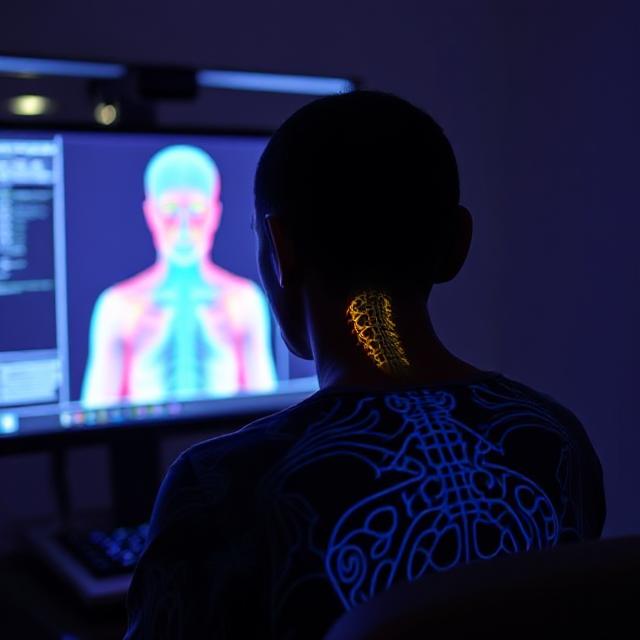In recent years, the field of health and wellness has seen a surge in innovative diagnostic tools aimed at understanding the intricate workings of the human body. Among these, biofeedback scans have gained significant attention for their ability to provide insights into physiological functions, stress levels, and overall health status. This article offers an in-depth exploration of biofeedback scans — what they are, how they work, their applications, benefits, limitations, and future prospects.
What Is a Biofeedback Scan?
A biofeedback scan is a non-invasive diagnostic procedure that measures and analyzes physiological signals from the body. The fundamental premise is that the body emits subtle signals—such as electrical activity, temperature changes, or muscle tension—that can be monitored and interpreted to assess health and stress levels.
Unlike traditional diagnostic tests, which often focus on specific organs or systems, biofeedback scans provide a holistic picture of the body’s physiological state. They utilize specialized devices equipped with sensors to detect signals like skin conductance, heart rate variability, muscle activity, and more, translating these into understandable data for practitioners and patients alike.
How Do Biofeedback Scans Work?
The core principle of biofeedback is that physiological processes are often involuntary but can be influenced consciously with awareness. By providing real-time feedback, individuals can learn to control certain bodily functions to improve health.
The Process:
- Preparation: The patient is comfortably seated or lying down. Sensors are attached to specific body areas depending on what is being measured.
- Data Collection: The biofeedback device records signals such as:
- Electromyography (EMG): Muscle tension
- Electrodermal activity (GSR): Skin conductance
- Heart rate variability (HRV): Autonomic nervous system activity
- Temperature: Skin temperature variations
- Respiration rate: Breathing patterns
- Analysis: The device or software analyzes these signals, often visualizing them on a screen in real-time. This feedback helps the individual recognize patterns associated with stress or health issues.
- Training & Intervention: Patients are guided to modify their physiological responses through relaxation techniques, breathing exercises, or mental focus, based on the feedback.
In the context of a biofeedback scan, the term often refers to the initial assessment phase, where the collected data provides a baseline of physiological functioning, which can then be used to develop personalized treatment or wellness plans.
Types of Biofeedback Scans
Different biofeedback scans target specific physiological markers:
- Neurofeedback: Focuses on brain wave activity, often used for neurological or psychiatric conditions.
- Thermal Biofeedback: Measures skin temperature to evaluate blood flow and autonomic function.
- Galvanic Skin Response (GSR): Assesses skin conductance related to sweat gland activity, linked to stress.
- Heart Rate Variability (HRV) Scan: Analyzes variations in heartbeats to assess stress resilience and autonomic nervous system balance.
- Muscle Tension Scan: Measures muscle activity, useful in pain management and stress reduction.
Applications of Biofeedback Scans
Biofeedback scans are versatile tools with applications spanning various fields:
- Stress and Anxiety Management: By identifying physiological responses to stress, individuals can learn techniques to modulate their reactions, reducing anxiety and improving emotional regulation.
- Chronic Pain Treatment: Muscle tension assessments help in managing conditions like tension headaches, migraines, and fibromyalgia.
- Cardiovascular Health: HRV analysis offers insights into autonomic nervous system functioning, aiding in the management of hypertension and heart disease.
- Mental Health: Neurofeedback is used to regulate brain activity in conditions such as ADHD, depression, and PTSD.
- Biohacking and Wellness Optimization: Athletes and health enthusiasts utilize biofeedback scans to optimize performance, recovery, and overall well-being.
- Detection of Imbalances and Toxicity: Some practitioners claim that biofeedback scans can identify nutrient deficiencies, heavy metal toxicity, and other imbalances, although scientific validation varies.
Benefits of Biofeedback Scans
- Non-Invasive and Painless: No needles or radiation involved; comfortable for patients.
- Real-Time Data: Immediate feedback helps in understanding physiological responses.
- Personalized Insights: Data-driven approach enables tailored interventions.
- Empowerment: Patients learn to self-regulate their responses, fostering active participation in health management.
- Complementary Tool: Can be used alongside traditional diagnostics for comprehensive assessment.
Limitations and Criticisms
Despite their advantages, biofeedback scans are not without limitations:
- Scientific Validation: While some biofeedback techniques have strong scientific backing (e.g., HRV training), others, especially those claiming to detect toxins or imbalances, lack rigorous validation.
- Operator Dependence: Accurate results depend heavily on the practitioner’s expertise.
- Variability: Physiological signals can be influenced by external factors like caffeine, medication, or recent activity, affecting accuracy.
- Cost and Accessibility: Advanced biofeedback equipment can be expensive, and not all clinics offer comprehensive scanning.
- Misinterpretation Risks: Without proper understanding, data may be misread, leading to unnecessary worry or ineffective interventions.
Future Directions and Innovations
The future of biofeedback scanning holds promising developments:
- Integration with Wearable Technology: Devices like smartwatches and biosensors are increasingly capable of providing continuous physiological data, making biofeedback more accessible.
- Artificial Intelligence (AI): AI algorithms can enhance data analysis, identify subtle patterns, and personalize interventions.
- Remote Monitoring: Telehealth platforms enable patients to undergo biofeedback assessments remotely, broadening reach.
- Holistic Health Models: Combining biofeedback data with genetic, nutritional, and psychological information for comprehensive health management.
Conclusion
Biofeedback scans represent a fascinating intersection of technology and health, offering insights into the body’s physiological functions that can inform stress management, disease treatment, and overall wellness. While they are powerful tools when used appropriately, it is essential to approach biofeedback with a critical understanding of its capabilities and limitations. As technological advances continue to evolve, biofeedback scanning is poised to become an even more integral part of personalized medicine and holistic health strategies, empowering individuals to take control of their well-being through greater self-awareness and self-regulation.
Disclaimer: Always consult qualified healthcare professionals before starting any new diagnostic or therapeutic modality, including biofeedback scans.



